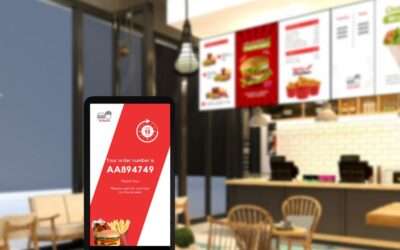How Digital Signage Transforms Grocery Stores
by Scala Team
How Digital Signage Transforms Grocery Stores
by Scala Team
How grocery shopping has changed
The way people shop for groceries has evolved in the last three years due to the pandemic, and grocery retailers are under pressure to keep up with demand and changing consumer expectations. While many people still prefer to shop for groceries in-store, there has been an inevitable shift toward online grocery retail. Despite this, many grocery retailers are nevertheless focusing some investment back into the physical store experience as restrictions ease and life returns to a ‘new normal’ in many regions.
Asia-Pacific continues to be the fastest-growing regional market for food and grocery globally in the next eight years, with Asian grocery sales predicted to reach almost $4 trillion by next year. Food and grocery continue to be the fastest-growing sector in the overall Asia-Pacific Retail market in 2022.
So, how can grocery retailers, from small specialty grocers to large supermarkets, evolve to meet changing expectations? Digital signage holds the key.

Transforming grocery stores with digital signage
Wayfinding and store navigation
We have explored in other posts how wayfinding can greatly improve grocery shopping, with solutions such as wayfinding kiosks, digital wayfinding directories, commercial tablets and large-format digital screens helping customers find their way around the store and to the products they need. Wayfinding digital signage continues to be one of the key ways to integrate the digital experience into physical grocery stores and improve the customer experience.
Endless Aisle
Online shopping has changed the way customers view the issue of in-stock/out-of-stock. They expect that if they cannot find a product on the shelf, it should be able to be ordered via another avenue. Endless Aisle solutions extend product selection beyond what is on the physical shelf, and digital signage can be used to facilitate access to digital product catalogues, virtual inventory and stock available in other locations. Grocery kiosks, commercial retail tablets and interactive touchscreens can all provide a gateway to a grocery retailer’s endless aisle and address physical stock limitations.
Shopper engagement and education
Grocery digital signage can help elevate the shopping experience from the mundane to the inspiring. Bright, high-definition screens can be used to showcase hot new products, display appetising images and video of fresh produce and food items and inspire shoppers with recipes and ideas. It can also be used as an educational tool, displaying nutritional information, suggesting healthy food options and highlighting environmentally friendly brands to look out for.
Real-time stock updates
The pandemic and its aftermath has seen supply chain challenges worldwide, especially in the areas of food and grocery. This can be a source of frustration for customers, but grocery digital signage may have a role to play in easing the frustration. Digital signs linked to a store’s inventory system can use real-time updates to alert customers about low or out-of-stock items (for example, fresh produce), and suggest alternatives that are in plentiful stock. Customers then feel informed and can update their shopping list on-the-go.
Advertising and product news
What better way to showcase new brands, advertise in-store promotions and deliver product news than digital signage? Grocery retailers can use digital signage easily to promote particular brands and drive more sales through in-store offers.
Self-checkout
In line with an overall shift to omnichannel retail, self-checkout powered by digital kiosks has become an indispensable tool in the grocery landscape. The retail industry represents the largest single self-serve kiosk user segment, and grocery retail is no small part of that. Self-checkout allows customers to skip the queue, take control of their own checkout process and save time in-store.
Shelf Edge Displays
Shelf edge displays allow grocery retailers to target customers in-aisle with offers, product information and up-to-date pricing information. Grocery prices are known for their fluctuations, and this is especially true with ongoing supply chain challenges. Shelf edge displays ensure customers are always seeing the latest price information, and can also be updated in real-time to reflect sales prices and special offers. They can also be used to highlight specific product or brand features to help customers make quick purchase decisions.
Transform grocery shopping with Scala digital signage
Scala has helped many global brands transform the in-store experience. Learn how you can drive more sales and engage shoppers with grocery digital signage from Scala.
About the Author:
Scala digital signage experts share their experience and thoughts in our blog to provide practical tips and advice for real-world applications. Our team aims to offer interesting content through a variety of formats including long form articles, video logs, interviews and infographics.



